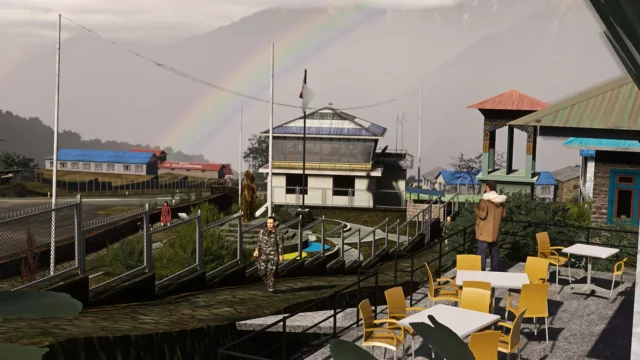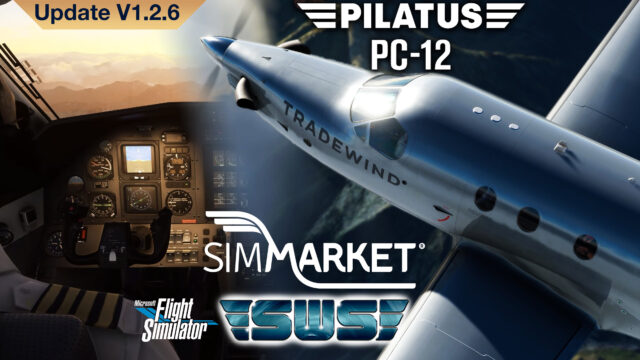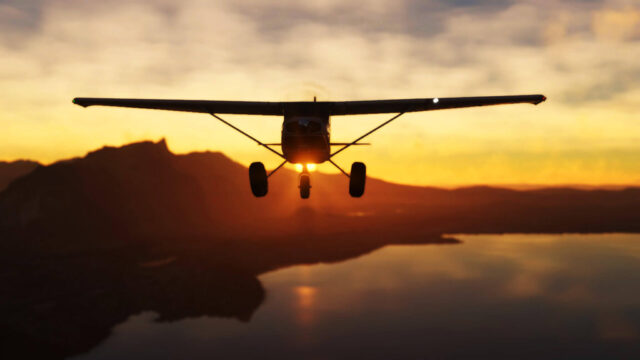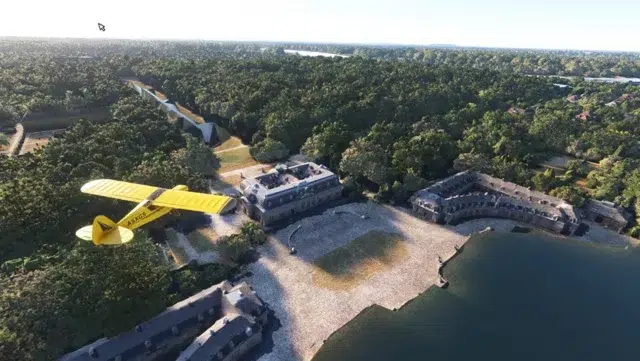Alabeo’s C400 Corvalis TT is now available on simMarket. Featuring Alabeo’s G1000, gauge reflections, window scratches and blade shines; It’s now ready for you to take it for a first flight!
Alabeo’s C400 Corvalis TT is now available on simMarket. Featuring Alabeo’s G1000, gauge reflections, window scratches and blade shines; It’s now ready for you to take it for a first flight!





| Cookie | Duration | Description |
|---|---|---|
| cookielawinfo-checkbox-analytics | 11 months | This cookie is set by GDPR Cookie Consent plugin. The cookie is used to store the user consent for the cookies in the category "Analytics". |
| cookielawinfo-checkbox-functional | 11 months | The cookie is set by GDPR cookie consent to record the user consent for the cookies in the category "Functional". |
| cookielawinfo-checkbox-necessary | 11 months | This cookie is set by GDPR Cookie Consent plugin. The cookies is used to store the user consent for the cookies in the category "Necessary". |
| cookielawinfo-checkbox-others | 11 months | This cookie is set by GDPR Cookie Consent plugin. The cookie is used to store the user consent for the cookies in the category "Other. |
| cookielawinfo-checkbox-performance | 11 months | This cookie is set by GDPR Cookie Consent plugin. The cookie is used to store the user consent for the cookies in the category "Performance". |
| DSID | 1 hour | To note specific user identity. Contains hashed/encrypted unique ID. |
| PHPSESSID | This cookie is native to PHP applications. The cookie is used to store and identify a users' unique session ID for the purpose of managing user session on the website. The cookie is a session cookies and is deleted when all the browser windows are closed. | |
| viewed_cookie_policy | 11 months | The cookie is set by the GDPR Cookie Consent plugin and is used to store whether or not user has consented to the use of cookies. It does not store any personal data. |
| viewed_cookie_policy | 1 hour | The cookie is set by the GDPR Cookie Consent plugin and is used to store whether or not user has consented to the use of cookies. It does not store any personal data. |
| Cookie | Duration | Description |
|---|---|---|
| pid | 1 year | Helps users identify the users and lets the users use twitter related features from the webpage they are visiting. |
| Cookie | Duration | Description |
|---|---|---|
| YSC | This cookies is set by Youtube and is used to track the views of embedded videos. |
| Cookie | Duration | Description |
|---|---|---|
| GPS | 30 minutes | This cookie is set by Youtube and registers a unique ID for tracking users based on their geographical location |
| Cookie | Duration | Description |
|---|---|---|
| ATN | 2 years | The cookie is set by atdmt.com. The cookies stores data about the user behavior on multiple websites. The data is then used to serve relevant advertisements to the users on the website. |
| bsc | The cookies is set by ownerIQ for the purpose of providing relevant advertisement | |
| everest_session_v2 | This cookie is used to display personalized and relevant ads to the users and measure the efficiency of the ad campaign. | |
| mc | 1 year | This cookie is associated with Quantserve to track anonymously how a user interact with the website. |
| NID | 6 months | This cookie is used to a profile based on user's interest and display personalized ads to the users. |
| pxrc | 1 month | The purpose of the cookie is to identify a visitor to serve relevant advertisement. |
| rlas3 | 11 months | The cookie is set by rlcdn.com. The cookie is used to serve relevant ads to the visitor as well as limit the time the visitor sees an and also measure the effectiveness of the campaign. |
| test_cookie | 15 minutes | This cookie is set by doubleclick.net. The purpose of the cookie is to determine if the users' browser supports cookies. |
| uuid | 2 months | To optimize ad relevance by collecting visitor data from multiple websites such as what pages have been loaded. |
| VISITOR_INFO1_LIVE | 5 months | This cookie is set by Youtube. Used to track the information of the embedded YouTube videos on a website. |
0 Responses
I rate it at 3 out of 5 stars
QUICK PROS: Good eye candy, typical of Albaeo/Carenado payware products, accurate flight dynamics compared to the real Columbia 400 airplane.
QUICK CONS: 3-D model is not proportionally correct on some features, both external and in the VC. Avionics are standard Albaeo default and not accurate compared to the real thing.
It’s nice to see someone brought out Columbia 400 / Cessna 400 Corvalis TT payware model with the G1000 cockpit. Even better that it was done by Albaeo which specializes in great visuals for its airplane. I have a little bit of time in the real CE-400 aircraft, as well as own EagleSoft’s Columbia 400 / Avidine Entegra payware aircraft, so I thought this would be a good one for myself to test out.
Physically the airplane looks great, though Albaeo seems like it cannot decide whether to make the airplane as the Columbia 400 with the G1000 or as the newer Cessna TTx incarnation. The 3-D model features the new McAuley composite scimitar propeller used on the TTx but still retains the old G1000 cockpit setup of the Corvalis TT as opposed to the TTx’s G2000/INTRINZIC system (and a well modeled INTRINZIC system would have made this payware worth the money. All but two of the included paint schemes are native to the newer TTx also, though I must admit that neither Columbia or Cessna offered much variety in paint schemes on the 400 / Corvalis TT. Externally and internally, however there are a number of dimensional inaccuracies; the ones I noticed the most were on the tailcone, flap hinges, and speedbrakes as well as the walnut side sticks and throttle, propeller and mixture controls in the cockpit.
Aside from this, the VC is nicely modeled – much better than the VC on the C400 / G1000 for X-Plane. Nightime lighting is also nice with the G1000 illuminated All the controls are in their correct places with the real thing, including the GCU-476 ReadyPad controller for the PFD and MFD in the center console. A G1000 equipped Columbia 400 had some unorthodox cockpit systems layouts with your circuit breakers next to your left knee and lighting controls located in odd locations on the center console. Door seals plus pitot and prop heat controls are located right next to the backup instruments and the electrical system is controlled via the overhead console. Once you get used to this and memorize these locations, its actually quite comfortable from an operator’s standpoint but annoying for an armchair flyer who has to point and click at a screen cursor to run things.
Systems functionality is another story. While most buttons and systems are included, they don’t function correctly. I haven’t had a chance to sit down and document everything that’s wrong with them as opposed to the real thing, but here were the faulty items I did find:
The G1000 IFD is a generic Albaeo default and does not model many of the real world features correctly. Symbology is not quite right. Many menus and sub-features are missing, as are a lot of functions and warnings. Engine and systems pages have many non-functional items such as the lean assist features and are inaccurate to the real thing. The flight planning feature is minimally capable, using a nav database circa 2006 FSX default and cannot simulate LPV approaches. The GFC700 autopilot is all wrong, including the FLC feature. The GCU-476 ReadyPad has been stripped down to seminal features. The G1000 also is not equipped with Garmin’s NAVIII Synthetic Vision either.
Many of the interior cockpit switches actuate but do not do anything. Pneumatic door seals, engine primer button, vapor suppress switch and cross tie switches are quickly come to mind here. The Albaeo C400 also does not model the rudder hold feature of the real thing; Unlike the Corvalis TT’s chief rival, the Cirrus SR-22T, the Corvalis does not have a real yaw damper or rudder trim to counter P-factor torque on takeoff and climb out. Forturnately, there is a feature in the Corvalis flight controls which can hold a pre-set amount of rudder pedal pressure. Unfortunately this is not the case in Albaeo’s C400 Corvalis and you will have to manually apply rudder pressure to center the ball in climb.
Flying wise, the Albaeo Corvalis TT is a bit of a pleasant surprise, as it is very faithful to the real thing. Handling, operating speeds and fuel burn are all very realistic and it handles like a real Corvalis TT in the pattern, including getting cranky with pitch authority if you don’t keep it above 75kts on final (85kts is an ideal approach speed in both the real thing and Albaeo’s C400). Instrument flying and approaches are as good as any other Carenado/Albaeo G1000-equipped payware, though as noted it still can’t simulate WAAS approaches.
Overall the Albaeo C400 is a good payware airplane – not great – that will probably be enjoyed by all but the most discerning armchair flyers. Systems-wise the EagleSoft Columba 400 was better despite it’s truckish handling and horrible Avidyne Entegra simulation. But the Albaeo C400 will make for good eye candy and something fun to fly around in.